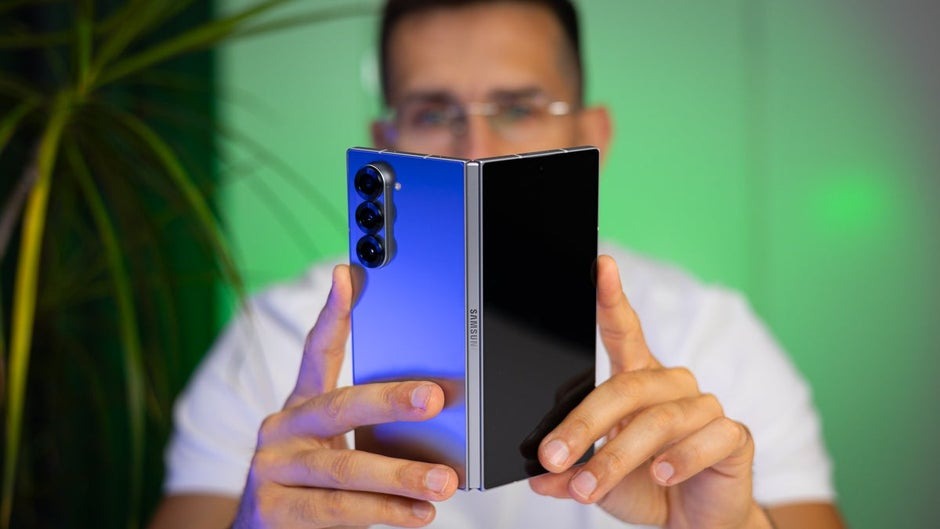Samsung’s upcoming Galaxy Z Fold 7 is shaping up to be one of the most anticipated releases in the foldable phone market, especially considering the advancements expected in its hardware and performance. While Samsung has not officially confirmed many of the details surrounding the device, leaks and rumors have begun to circulate, hinting at significant upgrades that could bring the device closer to delivering the perfect balance of performance, design, and affordability. One of the most intriguing aspects of these rumors is the possibility that the Galaxy Z Fold 7 might feature a lower-cost version of the Snapdragon 8 Elite chipset, a strategic decision that could make the foldable device more accessible without sacrificing too much in terms of performance.

The Snapdragon 8 Elite chipset, developed by Qualcomm, has made waves in the industry as one of the most powerful mobile processors available. It is known for offering top-tier performance, energy efficiency, and advanced AI capabilities, making it an ideal choice for high-end smartphones. However, with the cost of premium devices like the Galaxy Z Fold series often reaching astronomical prices, Samsung might choose to adopt a “binned” version of this chipset for the Fold 7 in order to bring costs down. Binned chips are those that don’t quite meet the highest performance standards but are still perfectly functional, offering a more affordable option for manufacturers to use in their devices. This strategy could allow Samsung to offer a device that delivers strong performance while maintaining a more reasonable price point for consumers.
What does this mean for you as a potential buyer of the Galaxy Z Fold 7? If the rumors prove true, it could result in a more affordable foldable phone that still offers a premium experience in terms of design and functionality. While the binned Snapdragon 8 Elite might not be quite as fast or efficient as its higher-end counterpart, it will likely still offer more than enough power for day-to-day tasks, gaming, and multitasking, allowing the Z Fold 7 to remain competitive with other flagship devices on the market.
At the heart of this decision is the question of how Samsung plans to balance performance with cost. The foldable smartphone market is still a relatively niche segment, and despite their high-tech appeal, foldable phones remain expensive. By using a binned Snapdragon 8 Elite chipset, Samsung could offer a device that meets the performance needs of most users while lowering the price point, which could significantly expand the Z Fold’s market reach. This could be especially appealing to those who have been eyeing foldable technology but are hesitant to make the leap due to the high cost.
The shift towards using a lower-cost binned chip could also indicate a larger trend within the mobile industry. As foldable phones become more mainstream, manufacturers may start to realize that high-end performance doesn’t always need to come at the highest price. In a market where consumers are increasingly looking for value without compromising too much on quality, Samsung might be trying to strike a balance between innovation and affordability with the Galaxy Z Fold 7.
Given that foldable phones are still a relatively new category, the cost of manufacturing them is higher than that of traditional smartphones. The advanced displays, folding mechanisms, and unique form factors all add to the price, so finding ways to reduce the cost of internal components without sacrificing too much performance will be key to making foldables more accessible. By using a binned version of the Snapdragon 8 Elite chipset, Samsung could lower the production cost while maintaining the high-end features that consumers expect from a device in the Galaxy Z Fold series.
Of course, it’s important to note that while the binned Snapdragon 8 Elite chip might come at a lower cost, it will still offer many of the same benefits as the standard version of the chipset, such as 5G connectivity, robust processing power, and advanced AI capabilities. This means that even with the lower-cost chip, the Galaxy Z Fold 7 would still provide a smooth, fast experience for most tasks, including gaming, multitasking, and content consumption. The key difference would likely be in tasks that require the absolute highest level of performance, such as intense gaming or heavy multitasking, where the standard Snapdragon 8 Elite might outperform the binned version.
In addition to performance, another aspect of the Galaxy Z Fold 7 that could benefit from the binned Snapdragon 8 Elite chip is battery life. One of the biggest concerns with foldable phones is their battery performance, particularly given the unique form factor and the added energy demands of the foldable display. With the binned chip’s potentially better power efficiency compared to higher-performance versions, Samsung may be able to offer a foldable phone that delivers improved battery life, which is crucial for making the device more practical for everyday use.
As Samsung moves forward with this potential decision, it will be interesting to see how the company balances the need for affordability with its desire to push the boundaries of mobile technology. The foldable phone market is still evolving, and by offering a more affordable option with the Galaxy Z Fold 7, Samsung could help accelerate the adoption of foldables. Consumers who have been reluctant to invest in a foldable phone due to the high price tag may find the Z Fold 7 to be a more enticing option, allowing Samsung to tap into a broader market without sacrificing too much in terms of performance or experience.
Ultimately, the use of a binned Snapdragon 8 Elite chip in the Galaxy Z Fold 7 may be just one of many ways that Samsung seeks to redefine the foldable phone category. By making foldables more accessible, Samsung can continue to drive innovation while also catering to a wider audience. As the foldable market grows, this strategy could become a key factor in determining the future of smartphones, making high-end features more attainable for everyday users while pushing the envelope in terms of what mobile technology can achieve.
However, while the lower-cost binned chip could make the Z Fold 7 more affordable, it’s crucial to consider the impact this might have on other aspects of the device. While the foldable screen itself will likely remain one of the most advanced features of the phone, the binned chip could result in slight trade-offs in performance. For example, gaming enthusiasts or those who demand the highest performance for demanding apps may notice the difference between the binned and standard Snapdragon 8 Elite chips. It’s also possible that Samsung could reserve the more powerful version of the chip for its highest-end models, further differentiating the Z Fold 7 from other premium devices in the foldable category.
As the Galaxy Z Fold 7’s release date approaches, more information will undoubtedly surface regarding the device’s specs, pricing, and features. If Samsung moves forward with the binned Snapdragon 8 Elite chip, it will likely be one of the most talked-about aspects of the device, offering a glimpse into how the foldable phone market might evolve in the coming years. For now, the possibility of a lower-cost foldable phone that still provides a premium experience has consumers eagerly awaiting what Samsung will reveal next.
As with any major technological development, it’s important to approach these rumors with a healthy dose of skepticism. While the binned Snapdragon 8 Elite chip could offer an affordable alternative without sacrificing too much in terms of performance, only time will tell if it delivers the balance of price and performance that Samsung is aiming for. Whether or not Samsung goes through with this decision, the conversation around the future of foldable smartphones is bound to continue, with the Galaxy Z Fold 7 playing a pivotal role in shaping that future.
In conclusion, Samsung’s decision to potentially use a binned Snapdragon 8 Elite chipset in the Galaxy Z Fold 7 could significantly impact the foldable phone market by providing a more affordable entry point without sacrificing much in terms of performance. As the foldable category grows and becomes more mainstream, this could help push the boundaries of what is possible in mobile technology. As a consumer, if you’re considering upgrading to a foldable phone, the Galaxy Z Fold 7 might just be the device that delivers the best of both worlds: innovation, affordability, and performance.










Add Comment